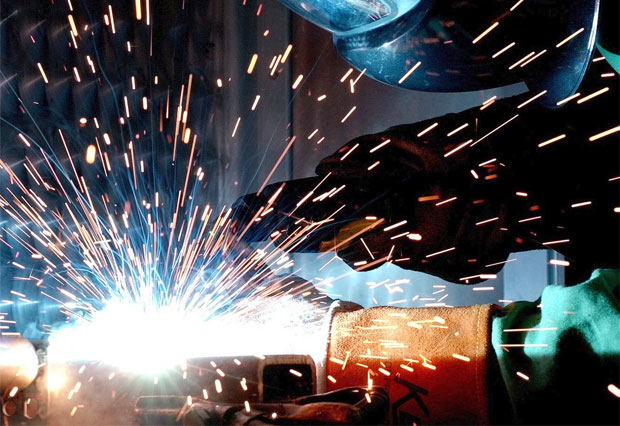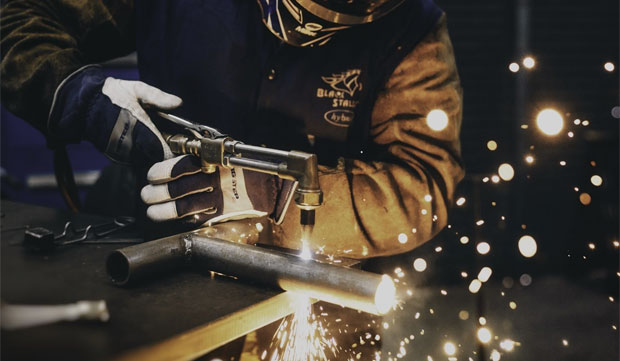What You Should Know About Oxy-Fuel Cutting
What You Should Know About Oxy-Fuel Cutting
If you’ve done any kind of DIY involving the material steel then you will have most likely investigated different types of cutting options available.
Steel is a strong material that needs heavy duty tools to be cut well and safely whether you’re cutting it to build some stylish kitchen stools with an industrial look or if you’re working on bigger projects around the house, building bigger structures.
One of the most accurate and reliable cutting techniques that is used in the steel industry is oxy-fuel cutting; this is used to cut mild steel. Most operates use this technique to get a high-quality cutting result, while saving time.
- The Basics Of Oxy-Fuel Cutting
To cut a material of steel using the oxy-fuel cutting procedure, you need to preheat the steel to a kindling temperature of about 960 ℃ – although this depends on the amount of alloy in the material. Why this temperature? It is worth noting that at this temperature, it is possible for the steel to oxidize as it last lost all protective properties. Using an oxy-fuel cutting torch, pure oxygen is conveyed directly on the specific surface area through the nozzle. As pure oxygen combines with the fuel and ignites on the pre-heated steel, it is converted to liquid steel – a process known as exothermic reaction.
It is worth noting that the steel has a higher melting point than the molten slag, which makes it easy to remove the latter without affecting the solid steel. This exothermic reaction is continuous as you cut through the steel; hence, it is necessary to keep the oxy-fuel cutting torch on all through. Another thing worth noting is that this process is applicable to only metals with oxides of lower melting points than the base metal. For this reason, mild steel and some low alloys can be cut successfully using this process.
- Getting The Best Result With Oxy-Fuel Cutting
When dealing with very thick materials, the oxy-fuel cutting process can be time-consuming. The shortest and fastest way to cut through a material is when it is perpendicular to the wall. Also, the heat transfer to the material will be higher than others, like the beveled cut, also known as an angled, which is used for weld preparation. The distance for a beveled cut is greater than that of a perpendicular cut. To have an accurate angled cut, you need to automate the speed control. Also, you can increase your cutting speed by attaching an extra oxy-fuel cutting torch perpendicular to the steel material and placed in front of the cutting torch. If your angled cut is steeper than 30°, then the pre-heater should be activated to prevent excess gas consumption.
- Protection Tips For Oxy-Fuel Cutting
One thing you should avoid when using the oxy-fuel cutting process is splatter during dipped piercing. Prior to cutting the steel, the specified surface area is being pierced through, using an exothermic process – this is the same process that is used during cutting. One the steel surface is preheated, it is heated into liquid oxidised steel, otherwise known as slag. So, it is commonplace for splatters to occur as the slag is removed from the solid steel by pure oxygen. Unfortunately, the cutting tip can be coated with this splatter, which hinders the flow of gas through the nozzle, resulting in poor work.
To avoid this problem, move the cutting torch upwards while piercing and once the steel is pierced, move it backwards to the exact torch-to-material cutting distance. Another option is to tilt the cutting torch a bit to prevent splatters from coming in contact with the cutting tip.
- What Makes Oxy-Fuel Cutting Ideal?
Oxy-fuel cutting is more ideal in cutting thicker and thinner walled materials than plasma cutting. Most welders don’t use plasma cutting thicker walls due to the huge amount of energy needed to pierce through them. Furthermore, with oxy-fuel, you can cut at steeper angles – at the very most, 70°, unlike plasma which requires at most, 45°, due to oxygen beam concentration. With plasma, steeper angled cuts can cause the plasma beam to deflect – although, this can be balanced by automation. Last but not the least, Oxy-fuel cutting has a lower cost than plasma cutting. If you are considering an ideal cutting process for your thick or thin-walled steel products, then oxy-fuel cutting is an ideal choice.
Guest Article.








